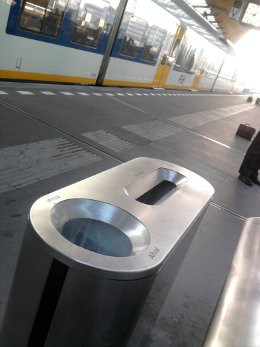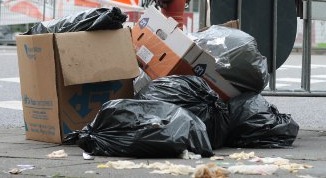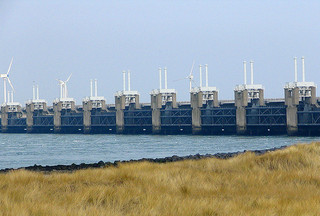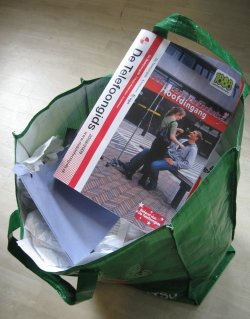
Train travellers have the option of throwing their waste in separate bins at Dutch train stations, but apparently it all gets pick up together in the end at most stations, including Amsterdam Central Station.
The only notable exception is Rotterdam Central Station where they make extra efforts to pick up the rubbish in several rounds, something that apparently cannot be done in Amsterdam due to having some 250,000 travellers passing through the station. I don’t quite understand that excuse: if it wasn’t possible to start off with, deceiving the public is not the best PR.
Berlin’s train station, which, without checking must get the same if not more travellers than Amsterdam does, manages to separate its garbage into four categories: waste, paper, packaging and glass, and, I’m guessing they make sure it’s not all thrown together in the end. My recent travels to Berlin as well as Frankfurt, Heidelberg, Mannheim, Karlsruhe, Munich and a few other Germany cities showed me that it can be done, so why is Dutch Railways failing so hard?
The separation and reduction of waste at stations, on trains and in retail (shops) are part of the Green Deal agreement between the Ministry of Infrastructure and the Environment and NS [Dutch Railways]. The goal of this agreement is to reduce the waste produced by passengers by 25% and to separate 75% of waste on collection so that it can be recycled by 2020.
Dutch Railways’ excuse is that it costs too much money to pick it up separately and in practice, it doesn’t really work. I still want to know why other European countries can do it and I also want to know how they plan to achieve their goals the way they are going.
(Links: parool.nl, NS sustainability)




 Eindhoven-based inventor and designer Dave Hakkens is a man of ideas and his latest idea, a mobile phone of which you can swap out parts when they break down or get too old, is getting a lot of attention on the Internet.
Eindhoven-based inventor and designer Dave Hakkens is a man of ideas and his latest idea, a mobile phone of which you can swap out parts when they break down or get too old, is getting a lot of attention on the Internet.